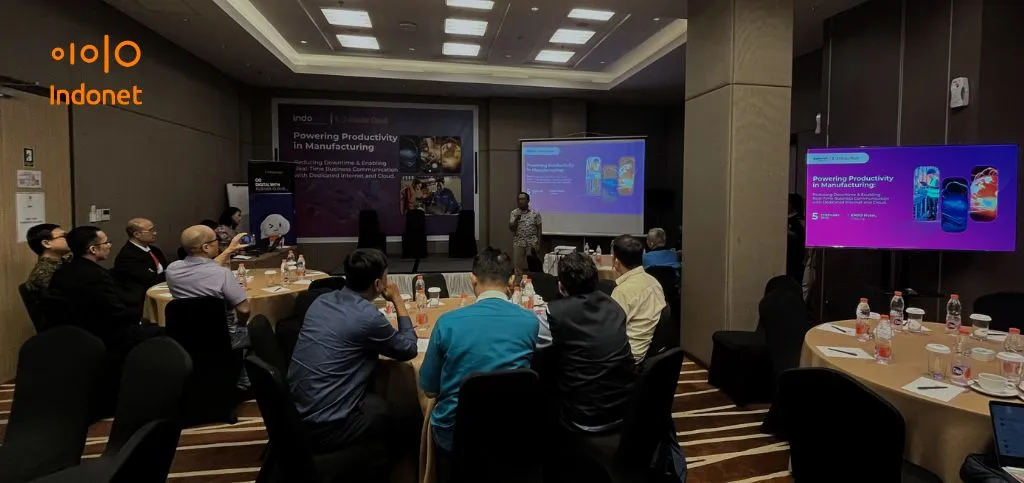On 5 February 2025 at ENSO Hotel, Cibitung, Indonet, Alibaba Cloud, and KLBD hosted a collaboration event that brought together leaders from operations, IT/OT, and engineering to explore how secure, low-latency infrastructure and cloud-based systems unlock measurable gains on the factory floor. The day was energetic and hands-on, with teams comparing notes on what it really takes to keep lines responsive while scaling reliably across sites.
In the keynotes and tech talks, Adi Suwirya (Solution Architect, Indonet) and M. Fakhri Darmawan (Solution Architect, Alibaba Cloud) unpacked how the right network and cloud stack keeps production moving short, reliable paths maintain real-time data flows, resilient design absorbs peak hours without drama, and centralized visibility accelerates troubleshooting. The panel session featuring Steven Ferdianto (PT Sukanda Djaya) and Fajar Martha Subqi (PT Denso Indonesia) translated those ideas into practice: start with the most critical flows such as MES/ERP/WMS, segment networks to protect OT, add multi-route WAN to preserve uptime, and use the cloud to standardize applications across plants so improvements replicate quickly.
Attendees pressed on three recurring questions. First, how to keep latency low between lines, edge gateways, and the cloud: the answer combined local peering and edge processing for time-sensitive tasks, with cloud aggregation for analytics and AI. Second, how to secure OT without slowing production: adopt network segmentation, Zero-Trust access, and 24/7 monitoring backed by clear SLAs. Third, how to scale to multiple sites: deploy SD-WAN with multi-route design and establish a repeatable cloud landing zone so each new location ramps predictably.
The takeaways were clear. Speed matters, lower latency makes approvals faster, and visual inspections smoother. Designing for peaks turns shift changes and rush hours into non-events. Security by design, segmentation and monitored policies and protects both IT and OT without getting in the way. Visibility wins: consistent monitoring and SLAs turn optimization into a habit, not a fire drill.






